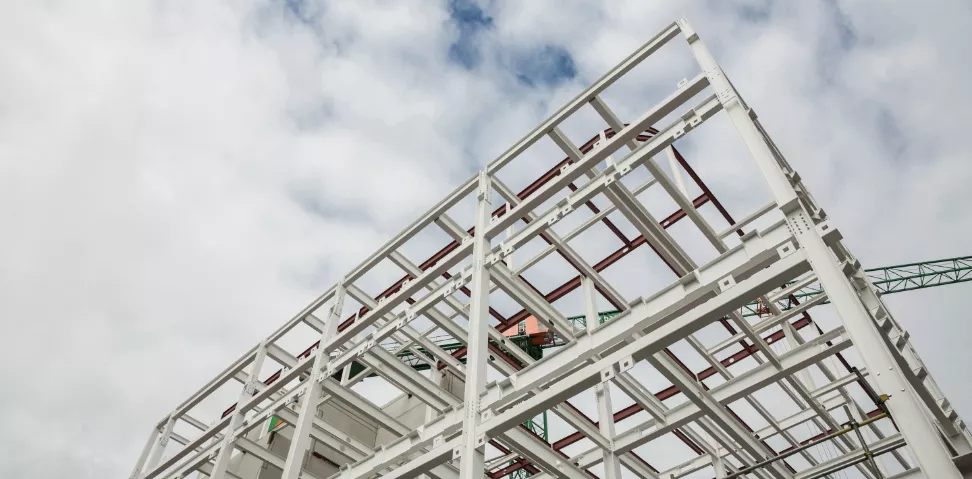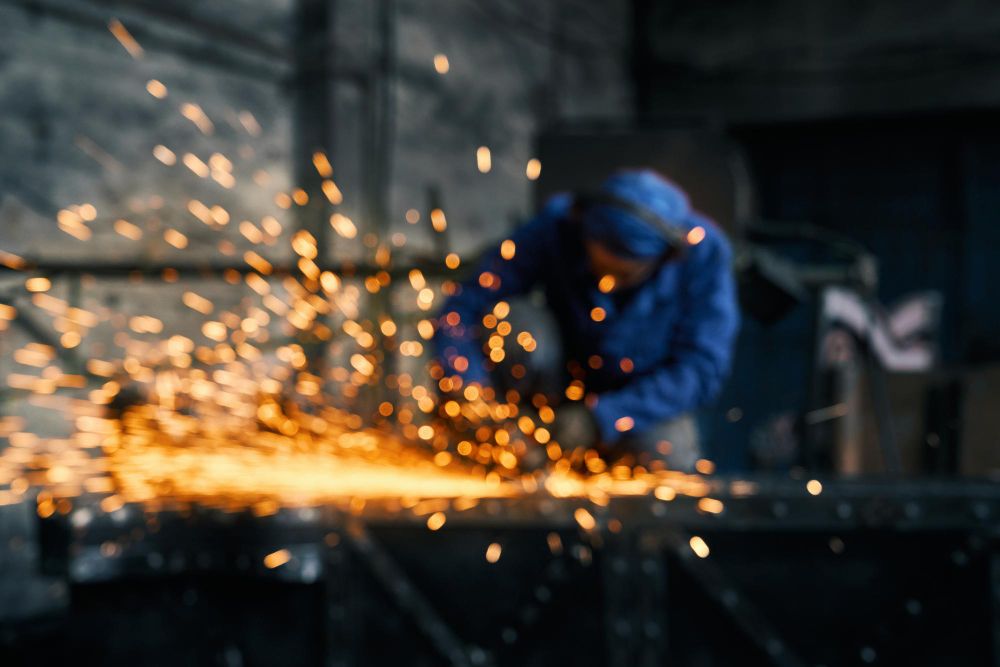The Challenges of Structural Steel in Infrastructure | Hadeed Engineering

Discover the unique challenges of designing and detailing structural steel for major infrastructure projects like tunnels, bridges, and industrial facilities.
Structural steel is essential for modern infrastructure, supporting a wide range of applications, including roads, tunnels, railways, and industrial facilities. Its strength and flexibility are inarguably vital for large projects. However, building with steel at this scale presents its own set of challenges that extend beyond standard design and detailing.
In this blog, we’ll dive into these challenges in more detail. We’ll also share how Hadeed Engineering approaches these situations in real-world projects, turning potential roadblocks into solutions.
1. Design Complexity in Structural Steel Infrastructure
The design phase of structural steel in infrastructure projects is more demanding than in most other construction sectors. Unlike buildings with regular forms and predictable loads, infrastructure must accommodate a mix of irregular geometries, variable conditions, and long-term performance expectations.
A) Advanced Loading Conditions
Infrastructure elements such as bridges, tunnels, and elevated transport corridors are subjected to complex load cases. These include:
- Traffic-induced vibration and dynamic loads
- Wind pressure and aerodynamic effects
- Thermal expansion and contraction
- Equipment-induced forces in industrial facilities
- Seismic activity in high-risk zones
These forces often combine in ways that can’t be reliably captured using conventional hand calculations or simplified models.
B) Geometry and Structural Irregularity
Modern infrastructure usually has skewed supports, curved spans, variable deck elevations, and asymmetric load paths. These conditions create complex behaviors in structural elements, especially at connections and transitions.
Example: Skewed or curved steel bridges behave differently under live loading than straight ones, which requires specialized modelling techniques to predict deflection and moment distribution accurately.
C) The Role of Finite Element Analysis (FEA)
Advanced modeling such as FEA helps engineers simulate how structures respond to a combination of load cases over time and under different environmental conditions. It is particularly useful for:
- Validating behaviour at non-standard supports
- Optimizing member sizing under mixed loads
- Stress analysis of complex welded or bolted connections
2. Detailing & Coordination Challenges
A) Precision at Large Scale
Steel detailing for infrastructure must account for massive structural components. Minor inaccuracies in shop drawings can lead to costly site adjustments or the fabrication of unusable parts.
Each bolt hole, weld prep, or plate thickness must be clearly defined and coordinated with surrounding systems. Incomplete or overly generic detailing introduces ambiguity and forces on-site interpretation.
B) Coordination Across Disciplines
Infrastructure steel should integrate seamlessly with concrete elements, road and rail alignments, service penetrations, architectural features, and temporary works. Misalignment between disciplines (especially between structural, MEP, and civil design) remains one of the most frequent causes of rework and delay.
These challenges are heightened when information is spread across multiple systems without a single source of truth. Effective detailing must not only be accurate but also coordinated.
C) Time Pressure and Documentation Quality
Fast-track infrastructure delivery often pushes detailing teams to work in parallel with ongoing design and procurement activities. This increases the risk of version control issues or rushed outputs that lack constructability review. Detailing in this phase is a critical delivery function that determines whether downstream fabrication and construction can proceed smoothly.
3. BIM Implementation in Infrastructure Projects
Building Information Modeling (BIM) has become a key tool in the delivery of major infrastructure projects. It enables:
- Clash detection between structural, civil, and MEP systems
- Coordination of sequencing and installation access
- Early resolution of spatial conflicts before fabrication
When used effectively, BIM reduces rework, improves site efficiency, and allows for smoother integration of complex assemblies.
Barriers to Effective BIM Use
Despite its benefits, many teams face difficulties with BIM adoption. Challenges include:
- Inconsistent skill levels across parties
- Lack of standardized practices
- Software compatibility issues
- Resistance to changing established workflows
These issues slow down coordination, especially when subcontractors or consultants rely on traditional 2D documentation or are unfamiliar with newer models.
4. Fabrication & Construction Risks
A) Material Volatility and Supply Chain Disruptions
Global supply chains can be unpredictable for steel and related products. Price volatility, shipping delays, and inconsistent availability of specific grades affect procurement and fabrication schedules. This unpredictability can force substitutions or disrupt the installation flow.
B) Fabrication Quality and Workshop Coordination
Infrastructure steel is often fabricated across multiple locations to meet volume and timeline demands. Maintaining consistent quality across shops requires clear documentation and robust quality control processes. Fabrication errors are magnified on large infrastructure projects; a single out-of-tolerance element can halt progress across an entire span or section.
C) On-Site Constraints and Installation Complexity
Limited access, live traffic, constrained laydown areas, and staged handovers increase the difficulty of installing large, heavy steel components. Mistakes in sequencing, lifting plans, or connection tolerances can create significant safety risks and program delays.
Success on-site depends heavily on early planning, clear documentation, and practical constructability reviews, all of which must happen during the design and detailing stages, not after steel arrives on-site.
5. Durability & Lifecycle Challenges
A) Corrosion from Environmental Exposure
Bridges, tunnels, and coastal infrastructure are often exposed to high levels of moisture, salt, and airborne pollutants that accelerate corrosion. Without proper protection, steel structures can deteriorate quickly and lead to costly repairs or compromised safety.
Effective corrosion resistance requires:
- Careful specification of materials and finishes
- Proper drainage and water shedding detailing
- Access for inspection and maintenance
B) Fire Protection in Structural Steel
Steel can lose strength rapidly when exposed to high temperatures, which compromises the load-bearing capacity in the event of a fire. Infrastructure projects must meet strict fire resistance standards. These standards require passive fire protection systems like intumescent coatings or encasements.
Integrating fire protection into steel design has its own challenges:
- Allowances must be made for thicknesses of fireproofing systems.
- Connections and brackets must not obstruct coverage.
- Conflicts can arise with other building systems at compartment boundaries.
If these considerations are not factored in during detailing, remedial work may be needed post-installation, adding cost and complexity.
6. Project Delivery Complexity
A) Multiple Stakeholders with Competing Priorities
Infrastructure projects involve a diverse range of stakeholders with varying priorities. Maintaining alignment between them and responding to scope change without derailing the project are constant challenges.
B) Compressed Timelines and Sequencing Pressure
With staged handovers, road closures, and funding deadlines, infrastructure schedules leave little room for error. Steel must be fabricated, delivered, and erected in precisely the correct sequence, often within narrow site access windows. Any disruption in the steel package can impact multiple other workstreams.
C) Adopting New Tools and Standards
While advanced tools like BIM and digital twins improve coordination, they also introduce learning curves, interoperability issues, and new documentation standards.
How Hadeed Engineering Tackles These Challenges
1. Responding to Design Complexity
Our engineers apply Finite Element Analysis (FEA) and advanced modeling to assess the performance of structural steel under various types of loads. These tools support design decisions on projects with irregular geometry or mixed loading conditions.
In the Melton Station level crossing removal, steel framing for the elevated platform required careful modelling of load paths and restraint systems that interacted with precast and concrete structures. FEA and design coordination were used to meet safety and constructability requirements.
2. Delivering Accurate, Buildable Detail
In the Coolstore Road level crossing removal, our engineers created shop drawings for restraint blocks, struts, and bearing plates that required precise coordination with civil and concrete works. This accuracy supported field installation with minimal rework.
During the Lithocraft canopy extension, Hadeed Engineering resolved detailing discrepancies before the fabrication began. This supported the project with error-free drawings and timely steel delivery of the 24-tonne structure.
3. Using BIM to Coordinate Disciplines
Hadeed Engineering adopts BIM to align structural steel with civil, service, and architectural models. This approach enables clash detection, clear communication, and better sequencing.
On the West Gate Tunnel Project, our team modelled gantry stairs and barrier rails along an elevated roadway that intersected with complex civil and service systems. This coordinated 3D modelling supported smoother integration across construction stages.
4. Supporting Delivery Under Real Constraints
Industrial coordination is highlighted in the Titan Cement Coal Mill project. Hadeed Engineering detailed steel structures that interface with coal handling equipment, all within tight access constraints and compliance frameworks typical of heavy industry environments.
Across all projects, Hadeed Engineering’s outputs are designed with constructability in mind. Shop drawings reflect field tolerances and material specs to help fabricators and site teams stay on schedule and aligned with broader delivery milestones.
Planning a steel infrastructure project?
Partner with Hadeed Engineering for structural solutions that keep delivery on track.



